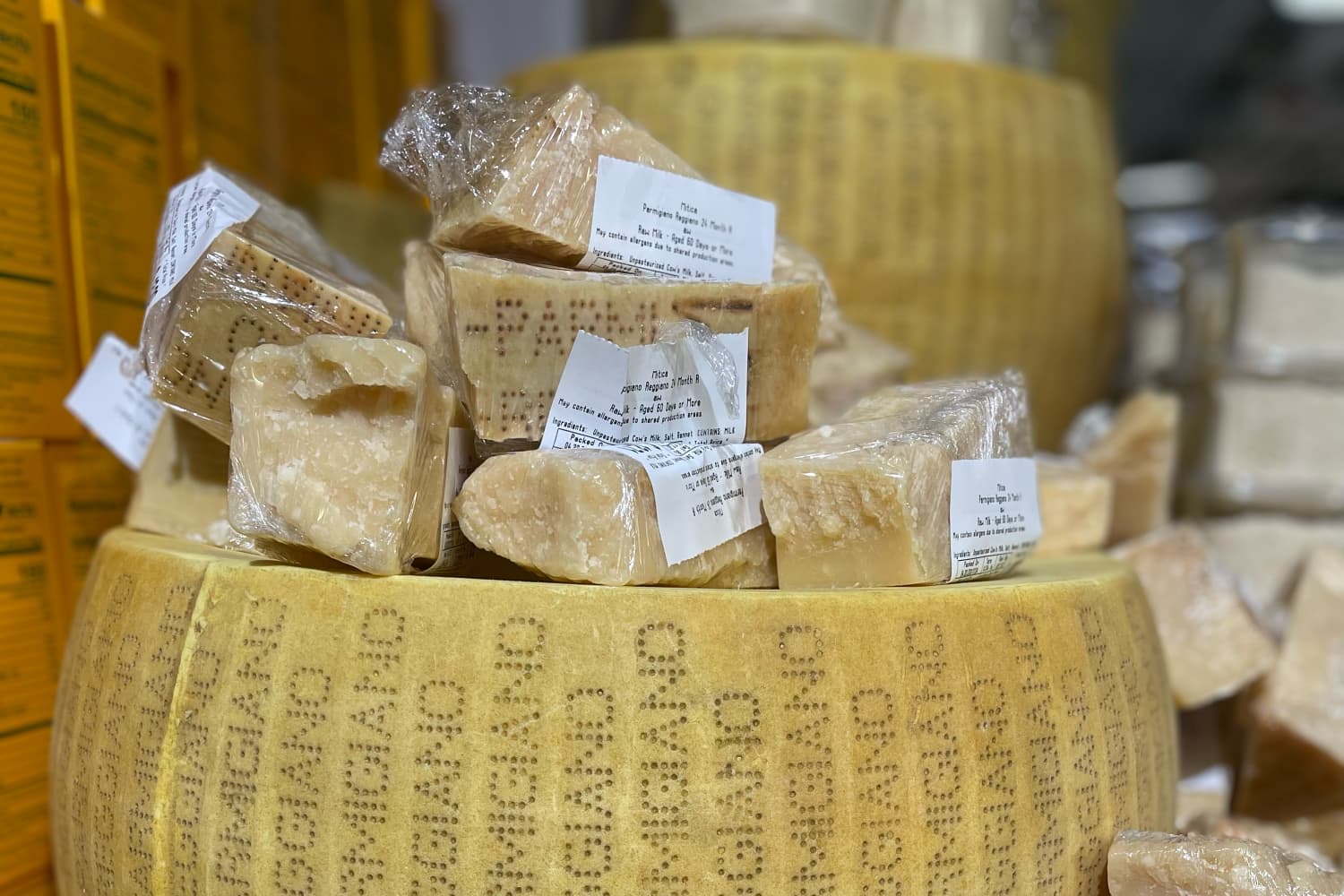“It’s just one of my favorite, most versatile cheeses,” says Cathy Strange, a vice president of specialty and global cheese expert at Whole Foods. She’s talking about Parmigiano-Reggiano. As the only American and non-Italian to ever receive the “Coltellino d’oro” from the Consortium of Parmigiano-Reggiano, Strange knows a lot about the classic cheese with the hundreds-year-old history. (It’s also her favorite snack. Period.)
While Parmigiano-Reggiano and Parmesan are often conflated as one and the same, they aren’t. “Parmesan is a style of cheese,” says Strange. “Parmesan or Reggiano is a specific cheese — that’s like saying I want to talk to you about a car, but it doesn’t matter if it’s a Lincoln, or a Mercedes, or a Volkswagen.” And, like other cheeses, Parmigiano-Reggiano is also aged for different periods of time, which affects the sharpness of the flavor and firmness of the texture.
How do you know which is which and what age-old Parmigiano-Reggiano you should pick up next time you’re in the cheese section? Strange shared some of her best tips and lesser-known facts about what to look for at Whole Foods or your neighborhood grocery store. Here are her top three tips.
1. The cheese should have a literal stamp of approval.
This is the number-one thing Strange says shoppers should look for when shopping for the cheese. “You want to look at the rind to make sure the pin dots are there,” says Strange. Parmigiano-Reggiano is made in the provinces of Bologna, Reggio Emilia, Mantua, Modena, or Parma. Although you’ll find lots of different Parmesan cheeses in the cases at your local grocery store, only wheels (and wedges) that come from these regions can don the label — or, in this case, the pin dots. (At 12 months, the minimum age of Parmigiano-Reggiano, the cheese is reviewed and stamped by the consortium.)
You should still be able to spot the markings on the wedges — which are hand cracked in store, at Whole Foods. No rind? No problem! Even the grated and shredded cheese at Whole Foods, explains Strange, has been validated by the consortium in Italy. If you’re shopping elsewhere, and are unsure about the authentication, ask the cheesemonger or department manager who works there.
2. For optimal texture and flavor, it should be aged 24 months.
Strange has tasted a lot of Parmigiano-Reggiano, at all levels: cheese that’s not able to be called Parmigiano-Reggiano yet (because it’s not yet reached 12 months) up to 10 years. Out of all the cheese she’s sampled, the ones aged 24 months are the standouts. That’s when the cheese “Begins to really evolve with flavor,” and “the unique characteristics come out,” she says.
3. Depending on where you live, your cheese could be more savory, moist, or even brothy.
Parmigiano-Reggiano has quite a range of flavors. And, it turns out, different regions of the U.S. have their own flavor preferences. Shoppers in the Midwest (at least the ones at Whole Foods), like a little more savory product, explains Strange, whereas those on the east coast gravitate towards a higher moisture cheese that features a little more fruity flavors, and in the South they like more brothy flavors. In fact, the grocer buys what’s called “export-level” cheese from specific caseficios that meet these unique flavor profiles.
Are you a cheese expert with a tip to add? Tell us in the comments below.
